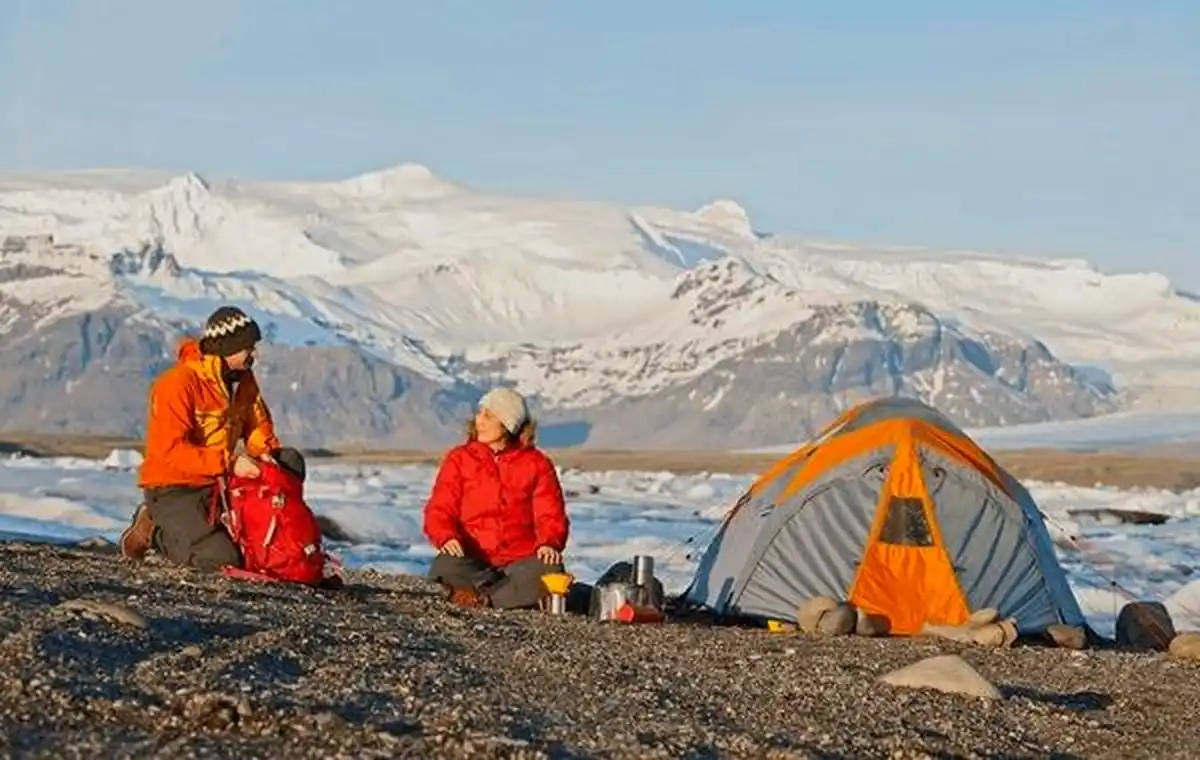
Exploring Hidden Gems: Lesser-Known Sailing Routes for Adventure Travelers
Sophia Romine - Mar 21, 2025 - 13 min read


Attire is like a best buddy during preparation for an adventure to the Arctic. However base layers are the very first layer of protection you're offering your body from that frigid cold. Well I'm not talking much on that. You will select moisture-wicking fabric types such as merino wool or synthetic ones. Here, you feel nothing when wet and help the clothing regulate your body's heat. So as far as possible, look out for great quality base layers, with a fit without too much movement. Insulating layers
Your insulating layers are your next option-very important for retaining the internal heat when it gets as cold as ice. Include fleece jackets, down vests, and insulated pants into your clothing list. Just remember, versatility in those layers means you're using pieces that can easily add or subtract as one does. Never forget other little things such as gloves, hat, and neck gaiter for protection in certain areas against frost bite.
This will be the outer layer, your final layer of protection from wind, snow, and moisture. You will want a waterproof and windproof jacket and pants for an Arctic adventure. Look for adjustable hoods, reinforced seams, and pockets for the necessities. Quality is important, since your outer shell is one of the most difficult to deal with on the face of the earth.
Arctic Traveler Note: Your feet are your means of transportation in the Arctic, so getting your feet warm and dry is critical. An insulated boot with a thick sole and also waterproof/moisture-proof is a must. Make sure to get those extreme-cold-rated boots, and bring spare pairs along with you to switch over at various points.
Gaiters will make a difference at that snowy essential: keeping snow out of your boot. Waterproof covers wrap around the lower legs and boots as an added layer against cold moisture. Their gaiters should be made to be strong, easy to adjust to fit snugly over all types of footwear.
Ice and snow make walking slippery, so this may be a lifesaver when going on an Arctic expedition. You may also need crampons or ice cleats that attach to your boots for grip on the ice. Snowshoes may also be necessary if there are deep snowdrifts to cross.
Your shelter is your sanctuary when in the Arctic wilderness so invest in a tent. A good frame, strong durable fabrics, and proper airflow to avoid condensation make for a great shelter; you'll want a tent designed for four seasons against high winds and heavy loads of snow. You never know what the night could bring.
A good sleeping bag is essential when you go to bed at subzero temperatures. Therefore, ensure you get a down-filled sleeping bag with a high rating that is lower than the lowest temperatures expected in your expedition. If you still need to retain heat while packing up, use a mummy-style sleeping bag. Keep the sleeping bag in a smaller space within your pack by using a compression sack.
A good sleeping pad will not only insulate your body and the frozen ground, but will also provide you with an adequate resting surface. It will require an R-value for Arctic use; this may be the time for an inflatable sleeping pad with comfort and packability to be considered. A night's rest will be invaluable in keeping you alert and energized on your trip.
Reliable technology is a demand of traveling the Arctic. A handheld GPS preloaded with maps of the region will be useful to keep track of your route. Key features to look for in such a device are waypoint marking, breadcrumb trails, and long battery life.
Communication is the word in remote environments, so carry a satellite phone to reach the outside world in case of an emergency. A satellite phone offers coverage where cell service is non-existent and you can call for help. Ensure you know how to use the device before venturing out on your expedition and carry spare batteries or a solar charger for longer trips.
Two-way radios will keep you in contact with your expedition team when the vision is low and terrain gets tough. Long-range and ruggedly constructed, this will be useful. It means having a plan in place for communication prior to the expedition will ensure all members stay connected and safe throughout.
Since an arctic climate burns calories within your body at a fast rate in order to keep your body warm, it is quite essential that you take in high-calorie snacks. Pack some light food rich in calories. Nut, dried fruits, energy bars are good ones to be included. You will require plenty of hot drinks like tea and cocoa, too, for hydration purposes.
Space and weight are something that is precious during the Arctic expedition. Thus, freeze-dried meals can be a good choice. These lightweight meals have low preparation requirements and can be rehydrated using hot water, providing a warm meal at the end of the long day. Keep variety in flavor to enjoy on your journey.
Water might be scarce, but there needs to be access to fresh water around the clock. In the Arctic, you can base your entire water supply on melting ice, an essential component of survival. You will need to bring a water purification system, which can range from a portable water filter to chemical treatment tablets, and depends on your preference.
The actual threat of the Arctic mountainous region is the avalanche risk; make sure you carry avalanche safety kit and that everybody in your group knows how to use a beacon, probe, and shovel appropriately, and learn techniques concerning avalanche awareness and avoidance techniques so that you do not fall into such situations at times.
Unexpected weather changes or equipment failure can leave you stranded in the wilderness, so pack an emergency shelter as a last resort. Options include lightweight bivy sacks, emergency blankets, or tarps that can be quickly deployed to provide protection from the elements. Keep your emergency shelter easily accessible in your pack for peace of mind on the trail.
Accidents can happen anywhere. Hence, a well-stocked first aid kit will prove useful in handling injuries and illnesses during an expedition. The kits should contain the following: bandages, antiseptic wipes, pain relievers, blister treatment supplies, and the like. Tailor the kit according to the duration and isolation of your expedition. Also, make sure each member of your group is aware of the location and its contents.
Even though the temperatures are below freezing, the Arctic sun can be quite strong and will be even stronger reflecting off the snow and ice. Pack sunglasses with UV protection, sunscreen with a high SPF rating, and lip balm with built-in sunblock to prevent sunburn and chapped lips. Remember to reapply sunscreen regularly, even on overcast days.
It might be pretty challenging to maintain personal hygiene up here in the Arctic, but it does help to keep one healthy and comfortable. Bring biodegradable soap, toothpaste, and a toothbrush to the trail for all the personal hygiene needs you want to address. Take along some wet wipes or hand sanitizer in case you do not have access to enough water for quick cleanups. A little trowel does come in handy for digging a cat hole when mother nature calls.
There may be quite long nights with not many things to keep you going, so that's another good thing when that is necessary. It would be maybe a book and journal; it could also be some cards. And if just something to busy your thoughts when there aren't things to do - that means a lot, actually. You might like to think about bringing your camera to preserve some of these beautiful panoramas and all the various wildlife you witness.
Especially, on cold days, use hand and foot warmers to warm up quickly. Carry disposable or reusable warmers to insert into gloves and boots for extra warmth if needed. These little powerhouses make a big difference in comfort and enjoyment of your trip.
Being able to be worn in multiple ways, a neck gaiter is a very versatile accessory that keeps your neck, face, and ears protected from the wind, snow, or any other elements. Seek a gaiter that is constructed from breathable and moisture-wicking fabric that can easily be adjusted to fit snugly under your jacket hood or over your nose and mouth for added warmth.
Heat is dissipated fast from your head when it is cold outdoors. A thermal hat is a must, therefore, if you are to keep warm. An insulating fleece or wool hat that keeps the ears covered and does not obstruct the wearing of a hood or helmet when needed is a good recommendation. This hat should not be too tight so that mobility is not restricted.
Respect the fragile Arctic environment while on the trip. Take nothing but bubbles. Take back all trash, stay on a designated trail, and do not disturb wildlife, as you explore this pristine Arctic wilderness.
The Arctic is home to polar bears, Arctic foxes, and many other species, so learn about local wildlife and their habits before heading out. If you're traveling in polar bear country, carry bear spray or other deterrents, and stay a safe distance from all wildlife. Viewing animals from a safe distance is how you ensure your safety as well as theirs.
Weather in the Arctic changes so fast that only keeping up with the weather and being prepared will ensure success in any expedition. Track weather forecasts and adjust your plans accordingly to avoid dangerous conditions. Carry the right gear for all types of weather: high winds, heavy snowfall, and extreme cold temperatures.
An Arctic expedition is one kind of adventure that one just cannot forget. It always requires careful planning and preparing for the journey. Packed with the above given necessary gear, and ensuring respect for the environment and animals, you can be perfectly safe and enjoy this voyage through one of the finest and most challenging landscapes anywhere on Earth. So now, bundle up, embrance the cold, and get ready for the Arctic adventure of a lifetime within the Arctic wilderness!

Sophia Romine - Mar 21, 2025 - 13 min read

Emily Hazel - Mar 17, 2025 - 8 min read

Lily Hofer - Mar 13, 2025 - 7 min read

Brian Garrity - Mar 10, 2025 - 6 min read